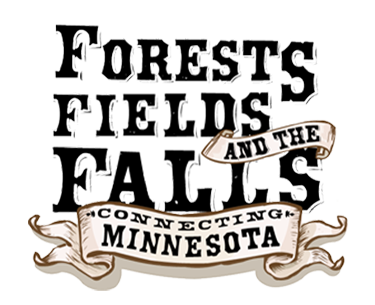Washington Avenue, 1910
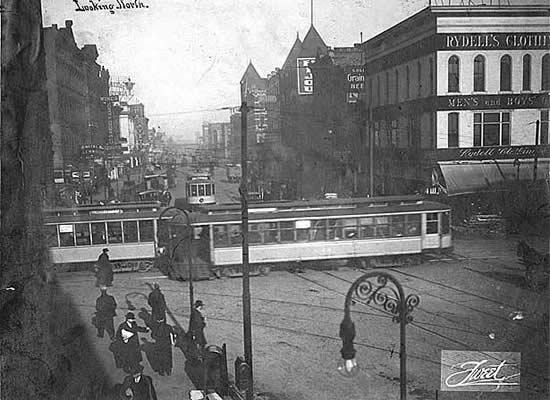
Washington Avenue looking north from Hennepin showing streetcars, cars, and pedestrians. Minneapolis, 1910.
Minnesota Historical Society Photograph Collection, MH5.9 MP2.1 p477
"...Other Wood Products Factories."
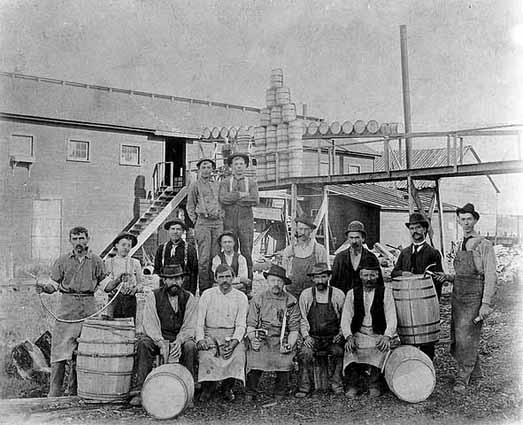
Workers at a cooperage, 1902.
Minnesota Historical Society Photograph Collection, Location no. Runk 2411
"Prominent among the general manufacturing lines of the city are those related, in a sense, to the flour and lumber industries, which have grown up because of supply of lumber and forest products or because of the creation of a great cereal market at this point. The manufacture of sash, doors and blinds and interior finish is carried on by a score of concerns. Furniture manufacturing, box factories and a long list of minor industries show the pre-eminence of the city as a center for all that pertains to lumber. Allied to both the lumber and flour industries is the extensive cooperage business of the city..."
The Minneapolis Chamber of Commerce, 1881-1903: A Historical Sketch(Minneapolis: 1903). Minnesota Historical Society Library Collection HF296 .M6h
Another Sawmill Neighborhood
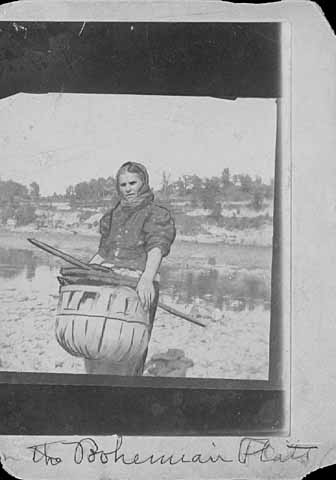
A woman at Bohemian Flats collecting firewood?, Minneapolis, ca. 1900.
Minnesota Historical Society Photograph Collection, Location No. GT2.52 r21
Other neighborhoods on the river also took advantage of the sawmills. One of these was Bohemian Flats—a shantytown on the lowlands below the University of Minnesota's west bank.
"Children too young to work in the city found jobs waiting for them in their own back yard—the river. They gathered the billets of wood, mill ends, 'dead heads' (entire logs), and other sawmill waste that came floating downstream. In the hectic days of logging ... the river was full of logs from early spring until the first of July. The yard behind each house was filled with wood piles. Some of the wood was used for household fuel and the remainder was sold. Old men no longer agile enough for factory work joined the youngsters along the riverbank."
Writers' Program of the Work Projects Administration in the state of Minnesota, The Bohemian Flats (Minneapolis: University of Minnesota Press, 1941?).
Other Sawmill Towns
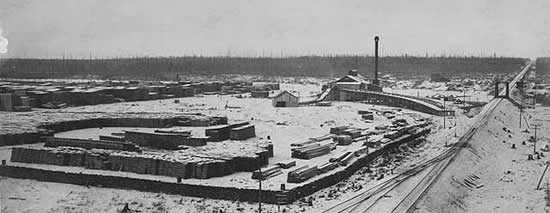
Sawmill in landlocked Hinckley, made possible by the railroads.
Minnesota Historical Society Photograph Collection, HD5.5 p37
Minneapolis may have been the "Sawmill Capital of the World," but other towns and cities throughout Minnesota had major sawmills:
- Anoka
- Brainerd
- Crookston
- Cloquet
- Duluth
- Ely
- Grand Forks
- Hinckley
- International Falls
- Little Falls
- Marine on St. Croix
- McKinley
- Mesaba
- North Branch
- Pine City
- St. Cloud
- Stillwater
- Tower
- Virginia
- Winona
Before the 1870s most sawmills were located along major rivers, allowing logs to float from the forests to the mills. As railroads expanded, sawmills no longer had to rely on the river for transportation; shortly after tracks were laid in inland towns like Hinckley and Pine City, sawmills opened for operation.
Melvin Frank, "In North Minneapolis: Sawmill City Boyhood," Minnesota History (winter 1980).
